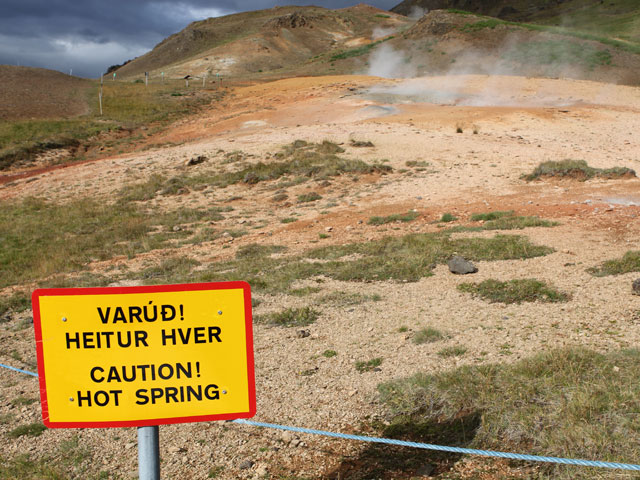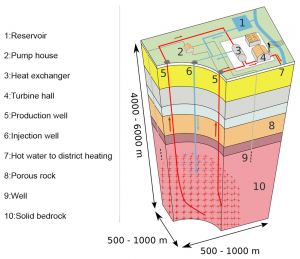Geothermal
 Hot springs area in Hveragerði, Iceland (Photo: Hjalti Þór Hreinsson - Arctic Portal)The utilization of geothermal energy is either direct (used for heating and as warm water supply) or to produce electricity (by driving turbines with steam from the heated water). In the circumpolar North, geothermal energy in the form of natural hot water springs and steam holes is mainly abundant in Iceland.
Hot springs area in Hveragerði, Iceland (Photo: Hjalti Þór Hreinsson - Arctic Portal)The utilization of geothermal energy is either direct (used for heating and as warm water supply) or to produce electricity (by driving turbines with steam from the heated water). In the circumpolar North, geothermal energy in the form of natural hot water springs and steam holes is mainly abundant in Iceland.
The country can be considered the "locus classicus" for this form of energy. Iceland began using geothermal energy for providing hot running household water and for heating homes and official buildings early in the twentieth century.
Today, it is pumped to the surface through boreholes from a depth of several hundred to a few thousand metres and then distributed via a complex network of pipelines and pumps to towns and rural areas to provide district heating and warm water supply for 90% of Icelandic homes.
Hot ground water is also used in an agricultural context to heat greenhouses that in turn grow vegetables or ornamental flowers for domestic consumption.
Most geothermal energy is currently extracted from so-called low-temperature fields, where water temperature at 1,000 m depth is about 100°C.
Along the volcanically active rift zone that stretches through Iceland from the southwest to northeast, there are in addition a  How geothermal energy is processed (Photo: WikiCommons). Click to enlarge.number of high-temperature fields, where the temperature exceeds 200°C at 1,000 m.
How geothermal energy is processed (Photo: WikiCommons). Click to enlarge.number of high-temperature fields, where the temperature exceeds 200°C at 1,000 m.
The majority are Ground Source Heat Pump (GSHP) installations with indirect closed-loop systems utilizing vertical boreholes in crystalline rock as the heat source.
When boreholes are drilled into these areas, hot water comes out in great force in the form of steam, which in turn can be used to rotate turbines and create electricity. Currently, there are seven such geothermal electricity plants in Iceland, generating around 25% of all electricity produced. Geothermal electricity often competes to its disadvantage with hydro power in pure economic terms in many regions.
However, geothermal electricity is considered environmentally and socioeconomically less damaging than hydro power, as it does not require large dams and reservoirs. Apart from Iceland, Sweden as well as Denmark and Norway have a history of using geothermal sources of energy.








